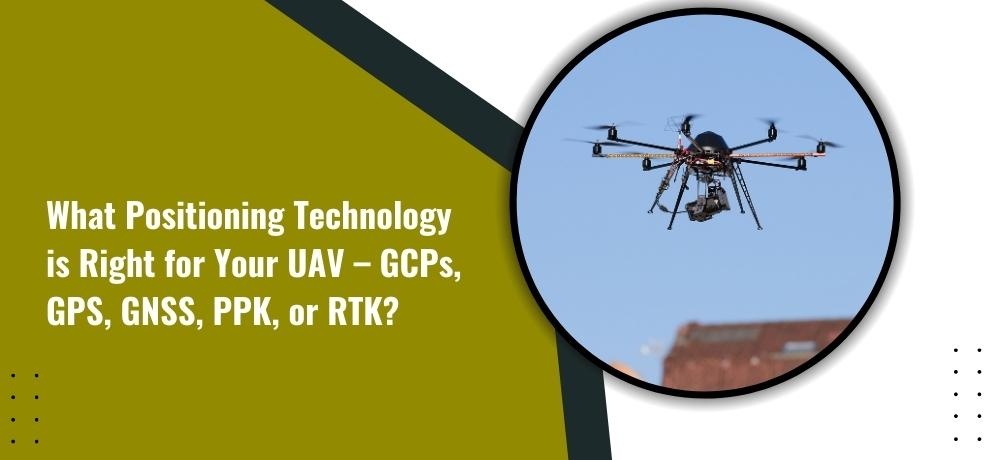What Positioning Technology is Right for Your UAV – GCPs, GPS, GNSS, PPK, or RTK?

In the fast-paced world of Unmanned Aerial Vehicles (UAVs), choosing the right positioning technology is pivotal. The landscape offers a plethora of options, each with its own benefits and considerations. From Ground Control Points (GCPs) to Global Positioning Systems (GPS), Global Navigation Satellite Systems (GNSS), Post-Processing Kinematics (PPK), and Real-Time Kinematics (RTK), the choices can be overwhelming. In this blog, we unravel the intricacies of each technology to help you make an informed decision.
1. Ground Control Points (GCPs) – A Traditional Approach
Ground Control Points (GCPs) have long been a staple in UAV surveying. These physical markers on the ground serve as reference points for accurate mapping. While GCPs provide reliable results, they can be time-consuming and require on-site setup, making them less suitable for rapid or remote surveys.
2. Global Positioning System (GPS) – A Foundational Tool
Global Positioning System (GPS) technology has been integral to navigation and surveying. While offering real-time accuracy, GPS may have limitations in challenging environments. However, when integrated with other technologies, GPS can provide a strong foundation for precision positioning.
3. Embracing GNSS for Aerial Precision
Global Navigation Satellite Systems (GNSS) expand the capabilities of GPS, utilizing a constellation of satellites for enhanced accuracy. GNSS-equipped UAVs can achieve centimeter-level precision, making them invaluable for applications that demand meticulous measurements.
4. PPK and RTK – Precision at Different Intervals
Post-Processing Kinematics (PPK) and Real-Time Kinematics (RTK) elevate accuracy by considering satellite signal delays. PPK involves data processing after the flight, while RTK offers real-time adjustments. Both technologies enhance precision, but the choice between them depends on factors such as workflow requirements and environmental conditions.
In the intricate world of UAV positioning, Labrosse Consulting stands as your guide in navigating the array of technologies available. Our expertise and commitment to precision ensure that your choice aligns seamlessly with your requirements. From comprehensive drone mapping to insightful consulting, Labrosse Consulting is your trusted partner.
To learn more about the services we offer, please click here. If you have questions, we’d love to hear from you. Please feel free to call us at (705) 618-6225 or jason@labrosseconsulting.ca.